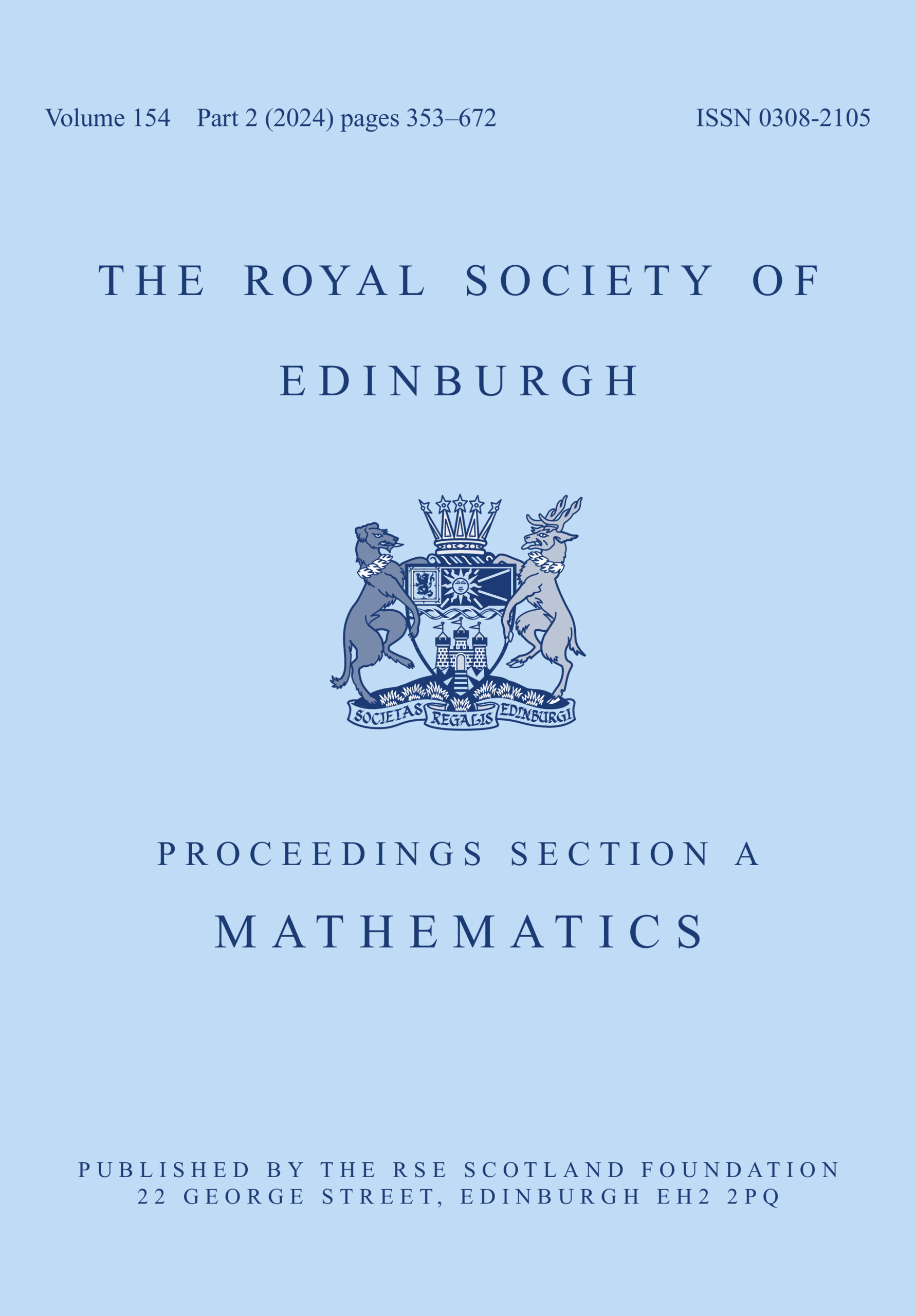Article contents
The Lavrentieff phenomenon for quadratic functionals
Published online by Cambridge University Press: 14 November 2011
Abstract
The paper provides an example of an integral functional in more than two dimensions, with a symmetric and positively defined quadratic integrand q, exhibiting the Lavrentieff phenomenon on a ball B and on a linear boundary datum u0, i.e. for which

The example is also utilised to discuss nonidentity between some relaxation procedures for a quadratic integral functional and to provide a weighted Sobolev space in the Hilbert case in which smooth functions are not dense.
- Type
- Research Article
- Information
- Proceedings of the Royal Society of Edinburgh Section A: Mathematics , Volume 125 , Issue 2 , 1995 , pp. 329 - 339
- Copyright
- Copyright © Royal Society of Edinburgh 1995
References
1Angell, T.. A note on approximation of optimal solutions of free problems of the calculus of variations. Rend. Circ. Mat. Palermo 28 (1979), 258–272.CrossRefGoogle Scholar
2Ball, J. M. and Mizel, V. J.. Singular minimizers for regular one-dimensional problems in the calculus of variations. Bull. Amer. Math. Soc. 11 (1984), 143–146.CrossRefGoogle Scholar
3Ball, J. M. and Mizel, V. J.. One-dimensional variational problems whose minimizers do not satisfy the Euler-Lagrange equation. Arch. Rational Mech. Anal. 90 (1985), 325–388.CrossRefGoogle Scholar
4Buttazzo, G.. Semicontinuity, Relaxation and Integral Representation in the Calculus of Variations (Harlow: Longman Scientific & Technical, 1989).Google Scholar
5Buttazzo, G. and Mizel, V. J.. Interpretation of the Lavrentiev phenomenon by relaxation. J. Fund. Anal. 110(1992), 434–460.CrossRefGoogle Scholar
7Esposito, A. Corbo and Arcangelis, R. De. Comparison results for some types of relaxation of variational integral functionals. Ann. Mat. Pura Appl. (IV) 164 (1993), 155–193.CrossRefGoogle Scholar
8Arcangelis, R. De. Some remarks on the identity between a variational integral and its relaxed functional. Ann. Univ. FerraraSez. VII–Sc. Mat. 35 (1989), 135–145.CrossRefGoogle Scholar
9Giorgi, E. De. Sulla convergenza di alcune successioni di integrali del tipo dell'area. Rend. Mat. (4) 8(1975), 277–294.Google Scholar
10Heinricher, A. C. and Mizel, V. J.. The Lavrentiev phenomenon for invariant variational problems. Arch. Rational Mech. Anal. 102 (1988), 57–93.CrossRefGoogle Scholar
11Lavrentieff, M.. Sur quelques problemes du calcul des variations. Ann. di Mat. (Ann. Mat. Pura Appl.) 4(1926), 7–28.CrossRefGoogle Scholar
12Manià, B.. Sull'approssimazione delle curve e degli integrali. Boll. Vn. Mat. Ital. 13 (1934), 36–41.Google Scholar
13Manià, B.. Sopra un esempio di Lavrentieff. Boll. Vn. Mat. Ital. 13 (1934), 147–153.Google Scholar
14Tonelli, L.. Fondamenti di Calcolo delle Variazioni (Bologna: Zanichelli, 1921-1923).Google Scholar
15Tonelli, L.. Sur une question du calcul des variations. Rec. Math. Moscou 33 (1926), 87–98; Opere Scelte, vol. III, pp. 1–15 (Rome: Cremonese, 1962).Google Scholar
16Zhikov, V. V.. Averaging of functionals of the calculus of variations and elasticity theory. Math. USSR Izvestiya 29 (1987), 33–66.CrossRefGoogle Scholar
- 2
- Cited by


